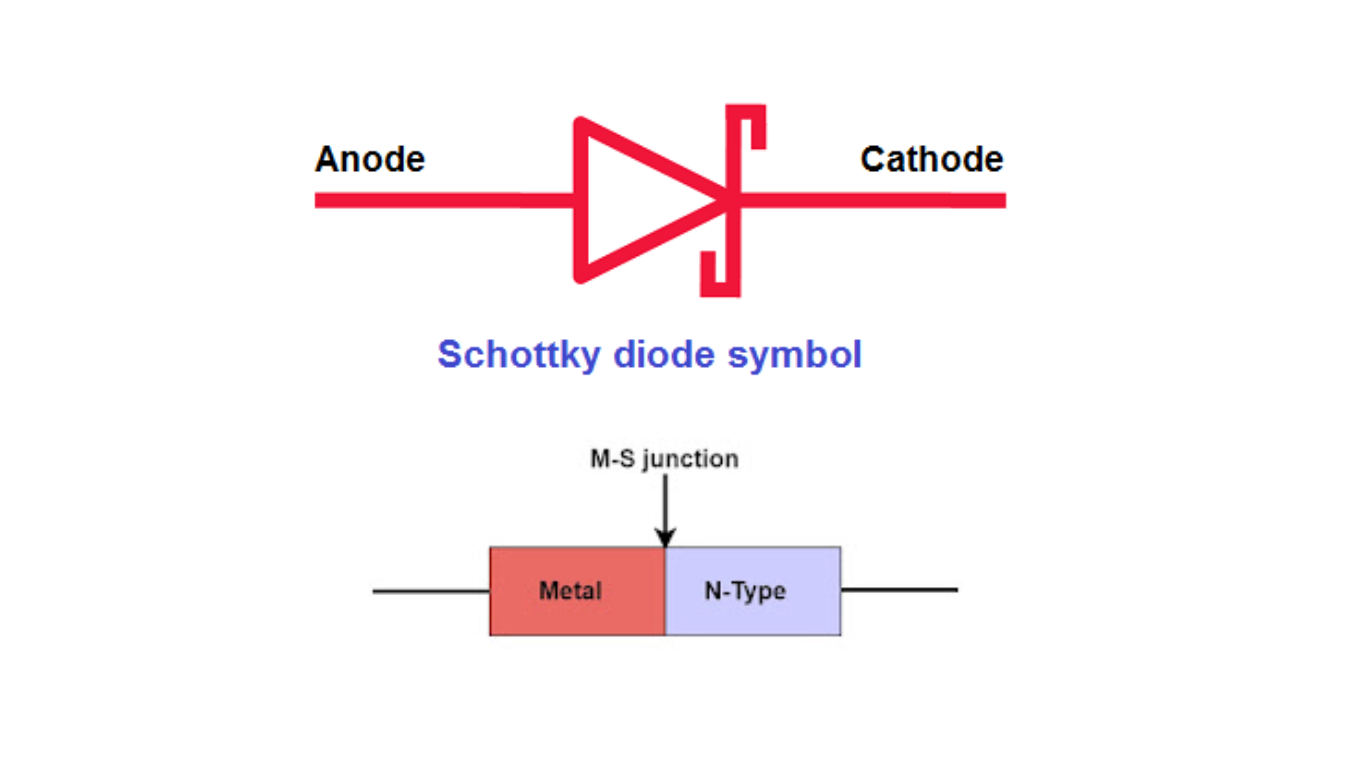Schottky Diode: Understanding Its Working and Applications
Schottky diodes are semiconductor devices widely used in various electronic circuits. They possess unique characteristics that make them suitable for specific applications. This article aims to provide an overview of Schottky diodes, delve into their working principle, discuss their characteristics and advantages, and explore their applications in different electronic systems.

Schottky Diode: Overview
A Schottky diode, also known as a hot carrier diode or Schottky barrier diode, is a metal-semiconductor junction diode. Unlike conventional PN junction diodes, Schottky diodes are formed by a metal contact on a semiconductor material, typically a doped silicon substrate. The metal-semiconductor junction in Schottky diodes exhibits specific characteristics that set them apart from other diode types.
Working Principle of Schottky Diode
The working principle of a Schottky diode revolves around the formation of a Schottky barrier at the metal-semiconductor junction. The Schottky barrier is a potential energy barrier formed due to the difference in work function between the metal and the semiconductor material. This barrier allows for the efficient flow of majority carriers, making Schottky diodes suitable for high-speed applications.
Schottky Barrier Formation When a metal contact is placed on a semiconductor material, a thin layer known as the Schottky barrier is formed at the junction. This barrier prevents the flow of electrons from the metal to the semiconductor when the diode is reverse-biased. In forward bias, the barrier reduces, enabling the majority carriers (electrons in the case of an N-type semiconductor) to easily flow through the diode.
Forward Bias Operation In forward bias, a positive voltage is applied to the metal contact, while the semiconductor is grounded or connected to a lower potential. This forward bias reduces the Schottky barrier, allowing electrons to flow easily from the semiconductor to the metal contact. This results in a low forward voltage drop and minimal power dissipation in the diode.
Reverse Bias Operation In reverse bias, a positive voltage is applied to the semiconductor, while the metal contact is grounded or connected to a lower potential. This reverse bias widens the Schottky barrier, preventing the flow of electrons from the metal to the semiconductor. This results in high reverse breakdown voltage and minimal reverse leakage current.
Characteristics and Advantages of Schottky Diode
Schottky diodes offer several characteristics and advantages:
Low Forward Voltage Drop: Schottky diodes have a significantly lower forward voltage drop compared to conventional PN junction diodes. This attribute makes them suitable for applications that require low power losses.
Fast Switching Speed: Due to the absence of minority carrier storage in the metal-semiconductor junction, Schottky diodes have a faster switching speed, making them ideal for high-frequency and high-speed applications.
Low Reverse Recovery Time: Schottky diodes do not exhibit reverse recovery time, as they do not store minority carriers. This absence of reverse recovery makes them suitable for applications requiring fast switching and low losses.
High Operating Temperature: Schottky diodes can operate at higher temperatures compared to PN junction diodes, thanks to their metal-semiconductor junction configuration. This characteristic makes them suitable for high-temperature applications.
Applications of Schottky Diodes
Schottky diodes find applications in various electronic systems, including:
- Power Rectification: Schottky diodes are commonly used in power rectification circuits, where their low forward voltage drop and fast switching speed contribute to efficient power conversion.
- RF and Microwave Applications: Due to their high switching speed and low capacitance, Schottky diodes are widely used in radio frequency (RF) and microwave circuits, including mixers, detectors, and frequency multipliers.
- Voltage Clamping and Protection: Schottky diodes are employed in voltage clamping circuits to protect sensitive components from overvoltage transients. Their fast response and low forward voltage drop make them ideal for this application.
- Solar Panels: Schottky diodes are used in solar panels to prevent reverse current flow from the battery bank to the solar cells during periods of low or no sunlight.
Schottky diodes, with their unique metal-semiconductor junction configuration, offer distinct advantages in terms of low forward voltage drop, fast switching speed, and high-temperature operation. They find applications in power rectification, RF and microwave circuits, voltage clamping, and solar panels, among others. Understanding the working principle and characteristics of Schottky diodes enables engineers to utilize them effectively in various electronic systems.
FAQs
Q1. Can Schottky diodes handle high currents?
Yes, Schottky diodes can handle high currents, but their current ratings are typically lower compared to some other diode types. Care must be taken to choose a Schottky diode with an appropriate current rating for the application.
Q2. Do Schottky diodes have a reverse recovery time?
No, Schottky diodes do not have a reverse recovery time since they do not store minority carriers like PN junction diodes. This attribute makes them well-suited for high-frequency applications.
Q3. Are Schottky diodes suitable for high-temperature environments?
Yes, Schottky diodes are designed to operate at high temperatures. Their metal-semiconductor junction configuration allows them to withstand higher temperatures compared to conventional PN junction diodes.
Q4. Can Schottky diodes be used for AC signal rectification?
Schottky diodes are primarily used for rectifying DC signals due to their low forward voltage drop. For AC signal rectification, bridge rectifiers or other diode configurations may be more appropriate.
Q5. Can Schottky diodes be used as voltage regulators?
Schottky diodes, on their own, cannot regulate voltage. However, they can be used in conjunction with other components, such as voltage regulators or voltage reference circuits, to provide voltage regulation and protection.